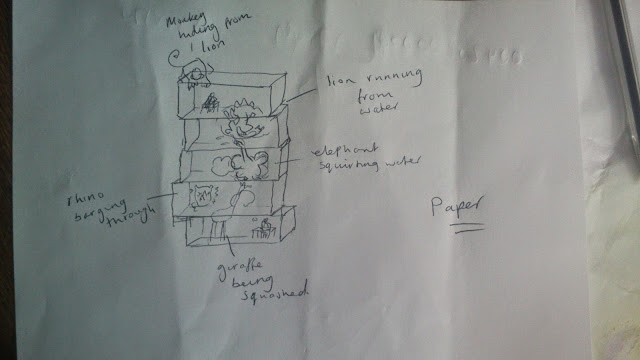EVALUATION
I have done
things a lot of things differently this year. The leniency and lack of
structure compared to A-Level was extremely difficult to get used to however it
has taught me how to be more independent and creative. I have managed to focus
on a great deal more experimental work as this opened a window of many
opportunities for me.
My plan was to fit as much experimental work in as possible in order to
gain a concrete idea. As well as this, I also focussed on acquiring influence
off various artists from various spectrums of art. With the Foundation being a
platform for gaining new skills, my first thought was to try 3D art. I needed
something more than just my drawings for the exhibition. Leaving my comfort
zone is something I needed to do. I experimented with Modroc, Plasticine,
Modelling Clay and Fimo along with making my boxes from scratch. Although my
boxes were successful, half of my 3D work was not. Proceeding to gain
inspiration by further artists, I concluded that I could create a 3D/2D piece
of work. This was a perfect idea for my exhibition piece, it is fun to look at,
it complements my watercolours wonderfully and while it is still 3D art, it represents
my love for illustration in an alternative way.
Whilst conducting the 3D experiments, I was also creating various
watercolour paintings that were to illustrate the literature, this is what my
boxes were interpreting. Logging the e-mails between the commissioner and I
allowed me to collect feedback and criticism. This was useful as it gave me the
insight on how another person can see something differently to how I see it. After
investigating various ways to present both the commissioner’s poems and my
illustrations, we came to a well-rounded conclusion. I had to work around the layout of the text
and this influenced the composition of my drawings however this isn’t as a negative
thing.
My only fault with my illustrations is I believe I should of used my
Ink Soluble Pencils as well as my watercolour palette, I believe this could
have intensified the colours on my illustrations. I gained some final criticism
off a girl called Hester who lives down my street who is 6 years of age. This
age is perfect for the criticism I needed as young people are never shy to
speak their mind and it is young people who I most strive to illustrate for.
I am happy with all of the work I have achieved and I am glad I have
had disasters along the way as it is how I learn and progress. I am extremely
pleased with my organisation skills during unit 7 as past experiences have
taught me to keep up to date with everything at all times. This has helped
massively and my only criticism and regret is that I didn’t leave a lot of time
for myself to do some detailed drawings to show my varied skills. Overall I
have matured a lot since A-Level, my time management and independence has
improved massively and I am ready for university.















































